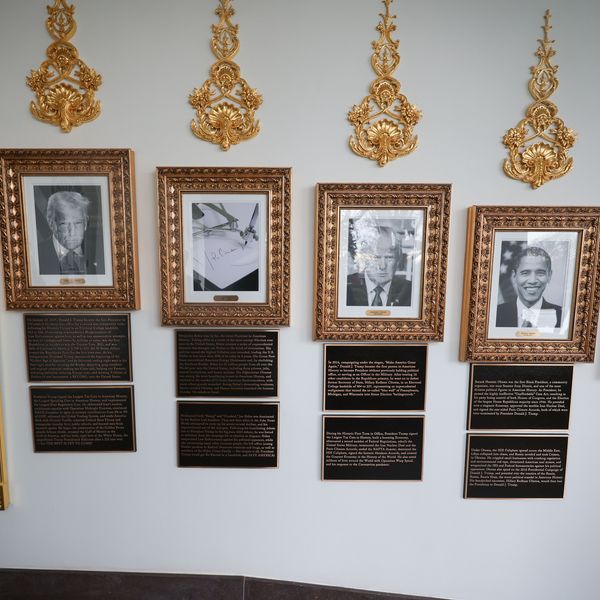Nonviolence Is The Right Choice--It Works
Nonviolent resistance is not only the morally superior choice. It is also twice as effective as the violent variety.
That's the startling and reassuring discovery by Maria Stephan and Erica Chenoweth, who analyzed an astonishing 323 resistance campaigns from 1900 to 2006.
"Our findings show that major nonviolent campaigns have achieved success 53 percent of the time, compared with 26 percent for violent resistance campaigns," the authors note in the journal International Security. (The study is available as a PDF file at https://www.nonviolent-conflict.org)
The result is not that surprising, once you listen to the researchers' reasoning.
"First, a campaign's commitment to nonviolent methods enhances its domestic and international legitimacy and encourages more broad-based participation in the resistance, which translates into increased pressure being brought to bear on the target," they state. "Second, whereas governments easily justify violent counterattacks against armed insurgents, regime violence against nonviolent movements is more likely to backfire against the regime."
In an interesting aside that has relevance for our times, the authors also write that, "Our study does not explicitly compare terrorism to nonviolent resistance, but our argument sheds light on why terrorism has been so unsuccessful."
To their credit, the authors don't gloss over nonviolent campaigns that haven't been successes. They give a clear-eyed assessment of the failure so far of the nonviolent movement in Burma, one of the three detailed case studies in the piece, along with East Timor and the Philippines.
In some sense, the authors have subjected to statistical analysis the notions of Gene Sharp, an influential Boston-based proponent of nonviolent change, someone they cite frequently in the footnotes. In his work, Sharp stresses the practical utility of nonviolence, de-emphasizing the moral aspects of it. He even asserts that for Gandhi, nonviolence was more of a pragmatic tool than a matter of principle, painting a picture that's at variance with much of Gandhian scholarship. In an interview with me in 2006, Sharp declared that he derives his precepts from Gandhi himself.
Gandhi's use of nonviolence "was pure pragmatism," Sharp told me. "At the end of his life, he defends himself. He was accused of holding on to nonviolent means because of his religious belief. He says no. He says, I presented this as a political means of action, and that's what I'm saying today. And it's a misrepresentation to say that I presented this as a purely religious approach. He was very upset about that."
One of the authors of the study, Maria Stephan, is at the International Center on Nonviolent Conflict. The group's founders wrote a related book a few years ago, "A Force More Powerful: A Century of Nonviolent Conflict." Erica Chenoweth is at the John F. Kennedy School of Government at Harvard.
This study is manna for those of us who believe in nonviolent resistance as a method of social change. We don't have to justify it on moral grounds any more. The reason is even simpler now: Nonviolence is much more successful.
An Urgent Message From Our Co-Founder
Dear Common Dreams reader, The U.S. is on a fast track to authoritarianism like nothing I've ever seen. Meanwhile, corporate news outlets are utterly capitulating to Trump, twisting their coverage to avoid drawing his ire while lining up to stuff cash in his pockets. That's why I believe that Common Dreams is doing the best and most consequential reporting that we've ever done. Our small but mighty team is a progressive reporting powerhouse, covering the news every day that the corporate media never will. Our mission has always been simple: To inform. To inspire. And to ignite change for the common good. Now here's the key piece that I want all our readers to understand: None of this would be possible without your financial support. That's not just some fundraising cliche. It's the absolute and literal truth. We don't accept corporate advertising and never will. We don't have a paywall because we don't think people should be blocked from critical news based on their ability to pay. Everything we do is funded by the donations of readers like you. Will you donate now to help power the nonprofit, independent reporting of Common Dreams? Thank you for being a vital member of our community. Together, we can keep independent journalism alive when it’s needed most. - Craig Brown, Co-founder |
Nonviolent resistance is not only the morally superior choice. It is also twice as effective as the violent variety.
That's the startling and reassuring discovery by Maria Stephan and Erica Chenoweth, who analyzed an astonishing 323 resistance campaigns from 1900 to 2006.
"Our findings show that major nonviolent campaigns have achieved success 53 percent of the time, compared with 26 percent for violent resistance campaigns," the authors note in the journal International Security. (The study is available as a PDF file at https://www.nonviolent-conflict.org)
The result is not that surprising, once you listen to the researchers' reasoning.
"First, a campaign's commitment to nonviolent methods enhances its domestic and international legitimacy and encourages more broad-based participation in the resistance, which translates into increased pressure being brought to bear on the target," they state. "Second, whereas governments easily justify violent counterattacks against armed insurgents, regime violence against nonviolent movements is more likely to backfire against the regime."
In an interesting aside that has relevance for our times, the authors also write that, "Our study does not explicitly compare terrorism to nonviolent resistance, but our argument sheds light on why terrorism has been so unsuccessful."
To their credit, the authors don't gloss over nonviolent campaigns that haven't been successes. They give a clear-eyed assessment of the failure so far of the nonviolent movement in Burma, one of the three detailed case studies in the piece, along with East Timor and the Philippines.
In some sense, the authors have subjected to statistical analysis the notions of Gene Sharp, an influential Boston-based proponent of nonviolent change, someone they cite frequently in the footnotes. In his work, Sharp stresses the practical utility of nonviolence, de-emphasizing the moral aspects of it. He even asserts that for Gandhi, nonviolence was more of a pragmatic tool than a matter of principle, painting a picture that's at variance with much of Gandhian scholarship. In an interview with me in 2006, Sharp declared that he derives his precepts from Gandhi himself.
Gandhi's use of nonviolence "was pure pragmatism," Sharp told me. "At the end of his life, he defends himself. He was accused of holding on to nonviolent means because of his religious belief. He says no. He says, I presented this as a political means of action, and that's what I'm saying today. And it's a misrepresentation to say that I presented this as a purely religious approach. He was very upset about that."
One of the authors of the study, Maria Stephan, is at the International Center on Nonviolent Conflict. The group's founders wrote a related book a few years ago, "A Force More Powerful: A Century of Nonviolent Conflict." Erica Chenoweth is at the John F. Kennedy School of Government at Harvard.
This study is manna for those of us who believe in nonviolent resistance as a method of social change. We don't have to justify it on moral grounds any more. The reason is even simpler now: Nonviolence is much more successful.
Nonviolent resistance is not only the morally superior choice. It is also twice as effective as the violent variety.
That's the startling and reassuring discovery by Maria Stephan and Erica Chenoweth, who analyzed an astonishing 323 resistance campaigns from 1900 to 2006.
"Our findings show that major nonviolent campaigns have achieved success 53 percent of the time, compared with 26 percent for violent resistance campaigns," the authors note in the journal International Security. (The study is available as a PDF file at https://www.nonviolent-conflict.org)
The result is not that surprising, once you listen to the researchers' reasoning.
"First, a campaign's commitment to nonviolent methods enhances its domestic and international legitimacy and encourages more broad-based participation in the resistance, which translates into increased pressure being brought to bear on the target," they state. "Second, whereas governments easily justify violent counterattacks against armed insurgents, regime violence against nonviolent movements is more likely to backfire against the regime."
In an interesting aside that has relevance for our times, the authors also write that, "Our study does not explicitly compare terrorism to nonviolent resistance, but our argument sheds light on why terrorism has been so unsuccessful."
To their credit, the authors don't gloss over nonviolent campaigns that haven't been successes. They give a clear-eyed assessment of the failure so far of the nonviolent movement in Burma, one of the three detailed case studies in the piece, along with East Timor and the Philippines.
In some sense, the authors have subjected to statistical analysis the notions of Gene Sharp, an influential Boston-based proponent of nonviolent change, someone they cite frequently in the footnotes. In his work, Sharp stresses the practical utility of nonviolence, de-emphasizing the moral aspects of it. He even asserts that for Gandhi, nonviolence was more of a pragmatic tool than a matter of principle, painting a picture that's at variance with much of Gandhian scholarship. In an interview with me in 2006, Sharp declared that he derives his precepts from Gandhi himself.
Gandhi's use of nonviolence "was pure pragmatism," Sharp told me. "At the end of his life, he defends himself. He was accused of holding on to nonviolent means because of his religious belief. He says no. He says, I presented this as a political means of action, and that's what I'm saying today. And it's a misrepresentation to say that I presented this as a purely religious approach. He was very upset about that."
One of the authors of the study, Maria Stephan, is at the International Center on Nonviolent Conflict. The group's founders wrote a related book a few years ago, "A Force More Powerful: A Century of Nonviolent Conflict." Erica Chenoweth is at the John F. Kennedy School of Government at Harvard.
This study is manna for those of us who believe in nonviolent resistance as a method of social change. We don't have to justify it on moral grounds any more. The reason is even simpler now: Nonviolence is much more successful.

